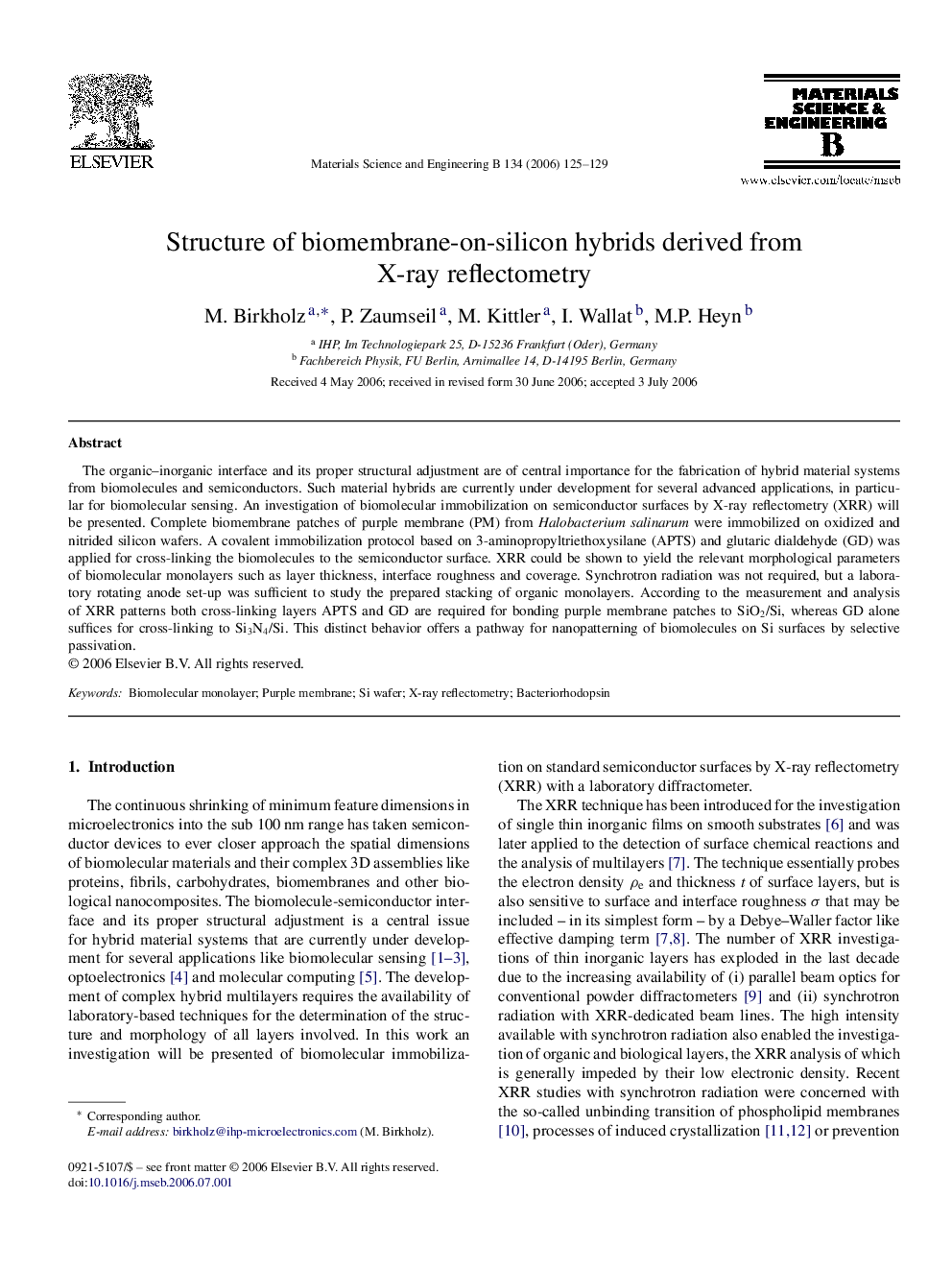| Article ID | Journal | Published Year | Pages | File Type |
|---|---|---|---|---|
| 1531788 | Materials Science and Engineering: B | 2006 | 5 Pages |
The organic–inorganic interface and its proper structural adjustment are of central importance for the fabrication of hybrid material systems from biomolecules and semiconductors. Such material hybrids are currently under development for several advanced applications, in particular for biomolecular sensing. An investigation of biomolecular immobilization on semiconductor surfaces by X-ray reflectometry (XRR) will be presented. Complete biomembrane patches of purple membrane (PM) from Halobacterium salinarum were immobilized on oxidized and nitrided silicon wafers. A covalent immobilization protocol based on 3-aminopropyltriethoxysilane (APTS) and glutaric dialdehyde (GD) was applied for cross-linking the biomolecules to the semiconductor surface. XRR could be shown to yield the relevant morphological parameters of biomolecular monolayers such as layer thickness, interface roughness and coverage. Synchrotron radiation was not required, but a laboratory rotating anode set-up was sufficient to study the prepared stacking of organic monolayers. According to the measurement and analysis of XRR patterns both cross-linking layers APTS and GD are required for bonding purple membrane patches to SiO2/Si, whereas GD alone suffices for cross-linking to Si3N4/Si. This distinct behavior offers a pathway for nanopatterning of biomolecules on Si surfaces by selective passivation.
